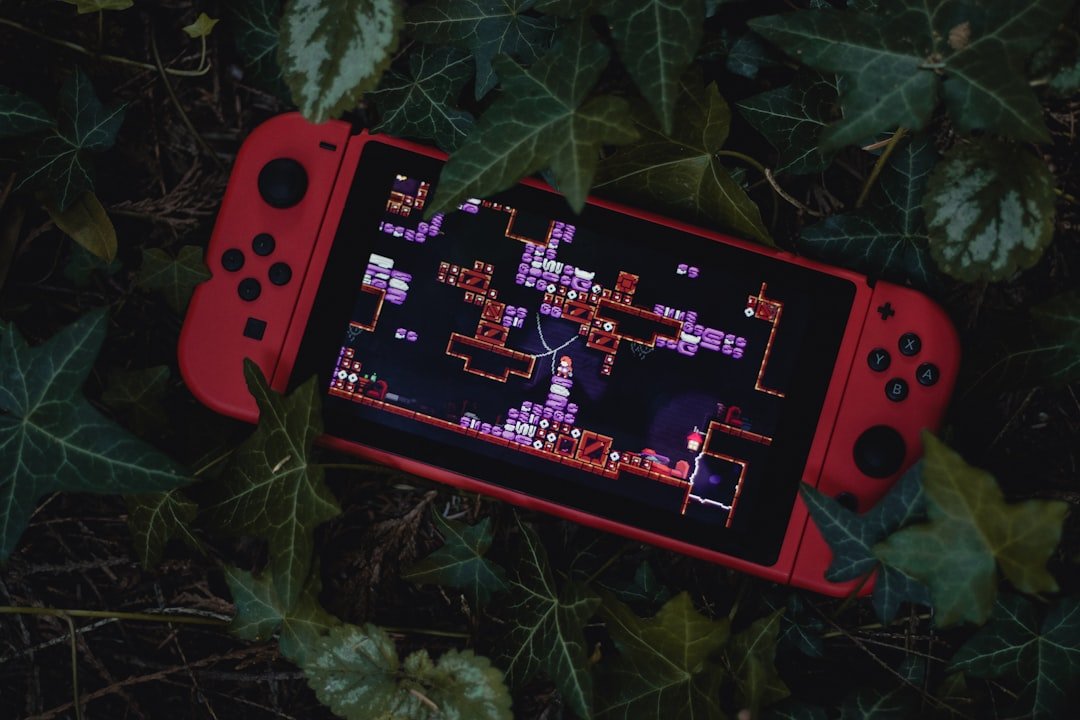Now Reading: Crafting Engaging Intros in Games: The Anatomy of a Good Tutorial
-
01
Crafting Engaging Intros in Games: The Anatomy of a Good Tutorial
Crafting Engaging Intros in Games: The Anatomy of a Good Tutorial

When I think about the role of a tutorial in any game, I realize that it serves as the gateway for players to immerse themselves in a new world. A well-crafted tutorial can make the difference between a player feeling lost and overwhelmed or engaged and excited. It is the first impression, the initial handshake that sets the tone for the entire gaming experience.
A good tutorial not only teaches players how to navigate the game but also instills confidence, allowing them to explore and enjoy the mechanics without fear of failure. Moreover, a tutorial is essential for establishing a connection between the player and the game. It introduces the game’s unique elements, whether they be mechanics, storylines, or characters.
By effectively communicating these aspects, a tutorial can create a sense of belonging and investment in the game. I have often found myself more inclined to continue playing a game that had a well-structured tutorial because it made me feel like I was part of something larger, something worth exploring further.
Key Takeaways
- A good tutorial is essential for onboarding new players and ensuring they understand the game mechanics.
- Understanding player experience is crucial for creating an engaging and enjoyable game.
- Setting clear objectives helps players understand what they need to accomplish and provides a sense of direction.
- Introducing core mechanics early on allows players to familiarize themselves with the fundamental aspects of the game.
- Balancing challenge and guidance is important to keep players engaged without feeling overwhelmed or lost.
Understanding Player Experience
To create an effective tutorial, I must first understand the player experience. Each player comes with their own background, preferences, and expectations. Some may be seasoned gamers familiar with complex mechanics, while others might be newcomers who feel intimidated by the vastness of a new game.
Recognizing this diversity is crucial in designing a tutorial that caters to various skill levels and learning styles. I often reflect on my own experiences as a player. There have been times when I felt overwhelmed by a steep learning curve, while other times, I appreciated a gentle introduction that allowed me to grasp the fundamentals before diving deeper.
By empathizing with players and considering their perspectives, I can create tutorials that resonate with them, ensuring that they feel supported rather than frustrated.
Setting Clear Objectives

One of the key components of an effective tutorial is setting clear objectives. When I embark on a new gaming journey, I appreciate knowing what I am supposed to achieve during the tutorial phase. Clear objectives provide direction and purpose, guiding players through the learning process.
They help me understand what skills I need to acquire and what challenges I will face as I progress. In my experience, tutorials that outline specific goals tend to be more engaging. For instance, if a tutorial states that I need to learn how to jump and dodge within the first few minutes, I can focus my attention on mastering those skills. This clarity not only enhances my learning experience but also fosters a sense of accomplishment as I complete each objective. By breaking down the tutorial into manageable tasks, I can build my confidence and prepare myself for the challenges that lie ahead.
Introducing Core Mechanics
As I delve into a new game, one of the most critical aspects of the tutorial is the introduction of core mechanics. These mechanics form the foundation of gameplay and dictate how I interact with the game world. A well-designed tutorial should seamlessly integrate these mechanics into its structure, allowing me to learn through practice rather than rote memorization.
I find that tutorials that incorporate core mechanics in a hands-on manner are particularly effective. For example, if a game involves combat, I appreciate being given opportunities to engage in battles early on while receiving guidance on how to execute attacks and defend myself. This experiential learning approach not only reinforces my understanding of the mechanics but also makes me feel more connected to the game itself.
By gradually introducing these elements, I can build my skills and confidence without feeling overwhelmed.
Balancing Challenge and Guidance
Finding the right balance between challenge and guidance is essential in crafting an engaging tutorial. As a player, I enjoy being challenged, but I also need enough support to prevent frustration from creeping in. A tutorial that is too easy may bore me, while one that is overly difficult can lead to discouragement.
Striking this balance requires careful consideration of pacing and difficulty progression. In my experience, tutorials that gradually increase in complexity tend to be the most effective. Starting with simple tasks and gradually introducing more challenging elements allows me to build my skills incrementally.
Additionally, providing hints or tips along the way can help me navigate tricky situations without feeling lost. This balance creates an environment where I can learn and grow while still feeling engaged and motivated to continue.
Incorporating Storytelling

Storytelling is another powerful tool that can enhance a tutorial’s effectiveness. When I am introduced to a narrative context within a tutorial, it adds depth and meaning to my learning experience. A compelling story can draw me in and make me care about the objectives I’m working towards.
It transforms what could be a mundane series of tasks into an engaging journey filled with purpose. I have often found myself more invested in games that weave storytelling into their tutorials. For instance, if I’m learning how to navigate a mysterious forest while uncovering clues about an ancient civilization, I’m not just learning mechanics; I’m becoming part of a larger narrative.
This connection keeps me engaged and eager to explore further, making the tutorial feel like an integral part of the overall experience rather than just a chore.
Utilizing Interactive Elements
Incorporating interactive elements into tutorials is crucial for enhancing player engagement. As someone who thrives on hands-on experiences, I appreciate when tutorials allow me to actively participate rather than passively absorb information. Interactive elements can take many forms, from mini-games to decision-making scenarios that require me to apply what I’ve learned.
For example, when a tutorial includes interactive challenges that test my understanding of core mechanics, it reinforces my learning in a fun way. Instead of simply reading about how to perform an action, I get to try it out in real-time, which solidifies my grasp of the concept. This active involvement not only makes the tutorial more enjoyable but also helps me retain information better as I engage with it on multiple levels.
Providing Feedback and Reinforcement
Feedback is an essential component of any effective tutorial. As I navigate through new challenges, receiving timely feedback helps me understand what I’m doing right and where I need improvement. Positive reinforcement encourages me to keep trying, while constructive criticism guides me toward better performance.
I find that tutorials that offer immediate feedback—whether through visual cues, sound effects, or on-screen messages—are particularly impactful. For instance, if I successfully execute a move or complete an objective, receiving positive reinforcement boosts my confidence and motivates me to continue learning. Conversely, if I make a mistake, gentle guidance on how to correct it helps me grow without feeling discouraged.
Encouraging Exploration and Experimentation
A great tutorial should also encourage exploration and experimentation within the game world. As a player, I thrive on discovering hidden secrets or alternative strategies that may not be explicitly outlined in the tutorial itself. When I’m given the freedom to explore and experiment with different mechanics or approaches, it fosters creativity and enhances my overall experience.
I appreciate tutorials that create opportunities for me to test my skills in various scenarios without fear of failure. For example, if I’m encouraged to try different combinations of moves or explore different paths within a level, it allows me to develop my own playstyle and preferences. This sense of agency not only makes the tutorial more enjoyable but also deepens my connection to the game as I uncover its intricacies.
Addressing Player Frustrations
Despite best efforts in designing tutorials, player frustrations can still arise during the learning process. As someone who has experienced moments of confusion or difficulty in games, I understand how important it is for tutorials to address these frustrations head-on. Acknowledging potential pain points and providing solutions can significantly enhance player satisfaction.
In my experience, tutorials that include options for additional help or resources are particularly valuable. Whether it’s offering hints for stuck players or providing access to community forums for support, these features demonstrate an understanding of player needs. By proactively addressing frustrations, developers can create an environment where players feel supported rather than abandoned during challenging moments.
Testing and Iterating for Improvement
Finally, one of the most critical aspects of creating an effective tutorial is testing and iterating for improvement. As someone who values feedback—both from myself and others—I recognize that no tutorial is perfect on its first attempt. Gathering input from players during beta testing or after launch can provide invaluable insights into what works well and what needs refinement.
I have seen firsthand how iterative design can lead to significant improvements in tutorials over time. By analyzing player behavior and gathering feedback on their experiences, developers can identify areas for enhancement and make necessary adjustments. This commitment to continuous improvement not only benefits future players but also demonstrates a dedication to creating an exceptional gaming experience.
In conclusion, crafting an effective tutorial requires careful consideration of various elements—from understanding player experience to incorporating storytelling and interactive elements. By balancing challenge with guidance and addressing player frustrations, developers can create tutorials that engage players from the outset. Ultimately, through testing and iteration, we can refine these tutorials further, ensuring they serve as welcoming gateways into immersive gaming worlds.
If you’re interested in learning more about the latest gaming technology, you should check out this article on what to expect from PlayStation VR2 features and upcoming games. It provides valuable insights into the future of virtual reality gaming and the exciting new experiences that will be available to players. Understanding the advancements in gaming hardware can enhance your overall gaming experience and help you make informed decisions about your gaming setup.



























